Source: milkwood.net
Published: March 5, 2013
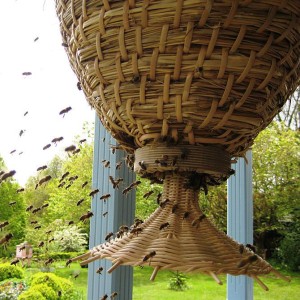
Lead photo by Heidi Herrmann, of the Natural Beekeeping Trust.
by Kirsten Bradley
Sun Hives are a hive design coming out of Germany and now gathering interest in Britain. They’re part of the world-wide movement towards ‘apicentric’ beekeeping – beekeeping that prioritizes honeybees firstly as pollinators, with honey production being a secondary goal.
The Sun Hive is modeled in part on the traditional European skep hive, and is aimed at creating a hive that maximises colony health. The main thing I love about this hive and the enthusiasm surrounding it is not the hive itself, but the philosophy behind it, that of apicentric beekeeping.

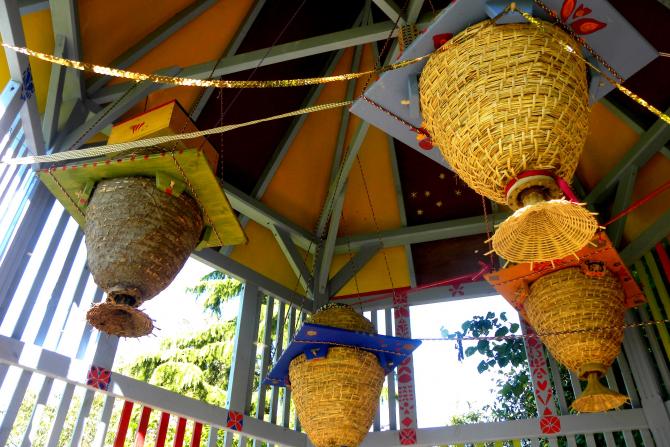
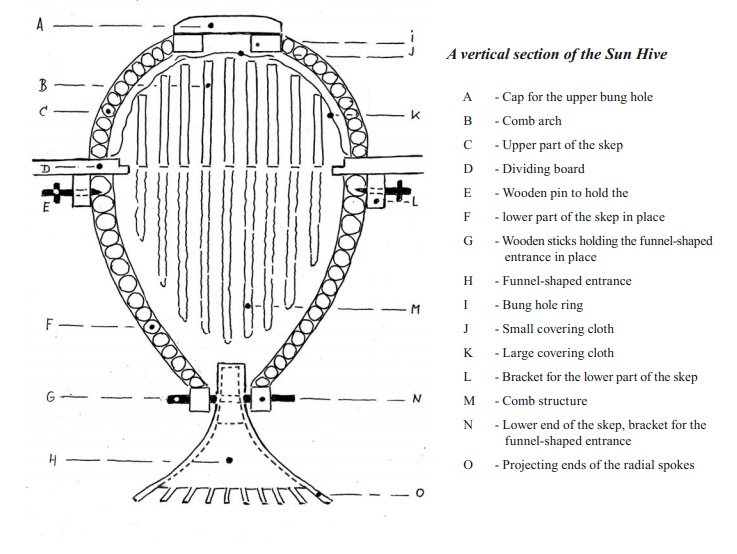

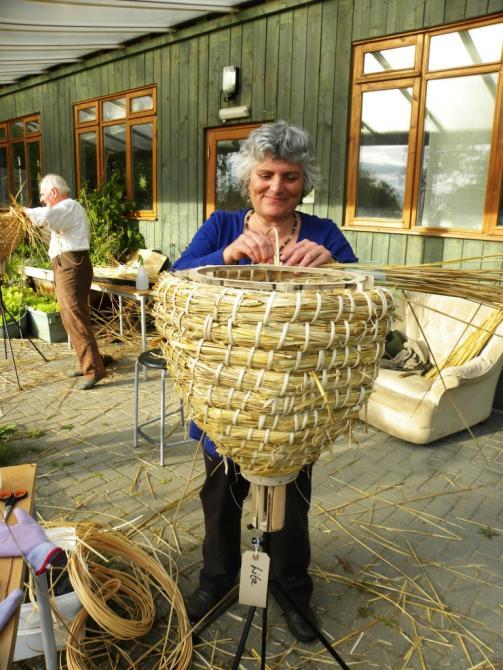
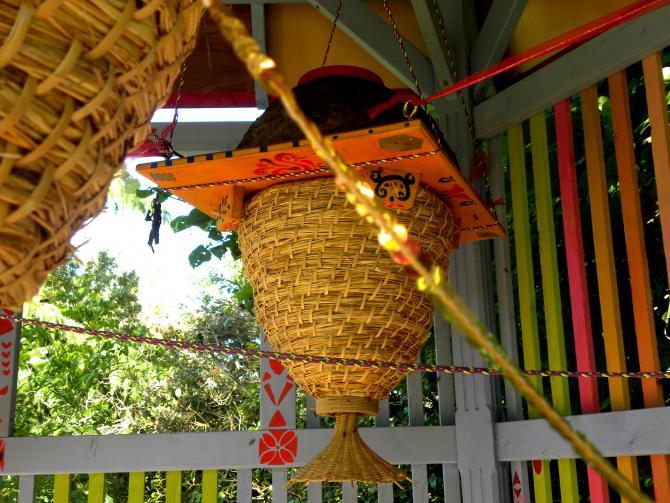
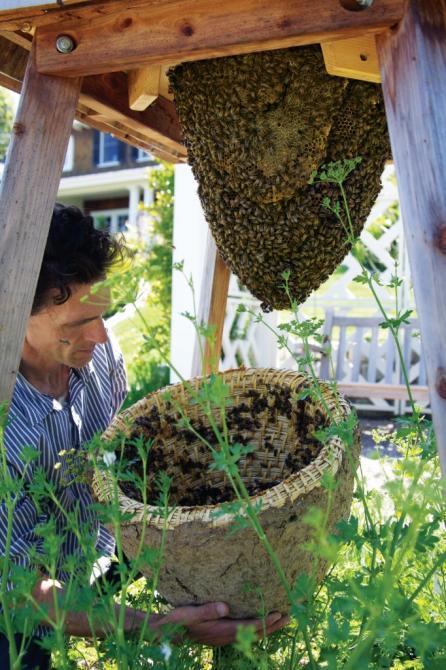
In brief, the Sun Hive has an upside down skep hive at its base with curving frames in the top section and no frames in the bottom section. The hive is placed well above ground level (optimal for bees – they never choose to create a hive on the ground).
Like a Warré hive, the Sun Hive allows the queen bee to roam freely through the entire hive and lay eggs where she wishes to, which in turn allows the colony to manage the location and progression of their brood nest, which is great for colony health.

The top curved frames of the Sun Hive provide the ability to (in theory) remove each frame, with the free-form comb beneath coming out as well as it is (again, in theory) attached to the frame directly above.
The Sun Hive can also have a super attached to it on a honeyflow (not sure about that, as I assume that means a queen excluder would be used to prevent brood comb being created in said super, which goes against the idea of allowing the queen to roam the hive, but anyway).
As I said, it’s not the design of this hive that particularly gets me going (though it is very beautiful), but the philosophy behind it… putting bees first before honey yields.
Also, this sort of experimenting is important. We cannot keep relying on the industrial style of beekeeping that is currently the norm. Well managed Warré Beehives are one branch of natural beekeeping, and this hive is another.
What we need, right now, is lots of apicentric beekeepers refining, experimenting and progressing resilient beekeeping techniques. Backed up by good information on bee behavior, not just whacky ideas.
Would this hive style work in Australia? I am not sure, but I suspect it might not be ideal for most parts of Australia. And that is ok. Each continent has vastly different conditions – nectarys, climate and other variations that necessitate adaptation for hive design for effective natural beekeeping.
A hive design developed on the other side of the world, no matter how groovy, is not necessarily going to result in a happy and healthy honeybee colony over this side of the world. There’s seasonal differences, the way honeyflows work is different, humidity, etc.
But Natural Beekeeping, in all its global variations, is at the heart of future honeybee health. The Sun Hive is definitely part of that matrix and is causing many in Europe to rethink hive design to ensure colony resilience.
See video Spectacular First Swarm for Sun Hive: https://youtu.be/HndNezyzWGw
Sun Hive resources:
- Sun Hive booklet by the hive’s designer Gunther Muncke (via Strathcona Beekeepers)
- Natural Beekeeping Trust in the UK hold workshops making Sun Hives
- Heidi Herrmann, a UK beekeeper using Sun Hives
- In the USA, Michael Thiele is working with the Sun Hive
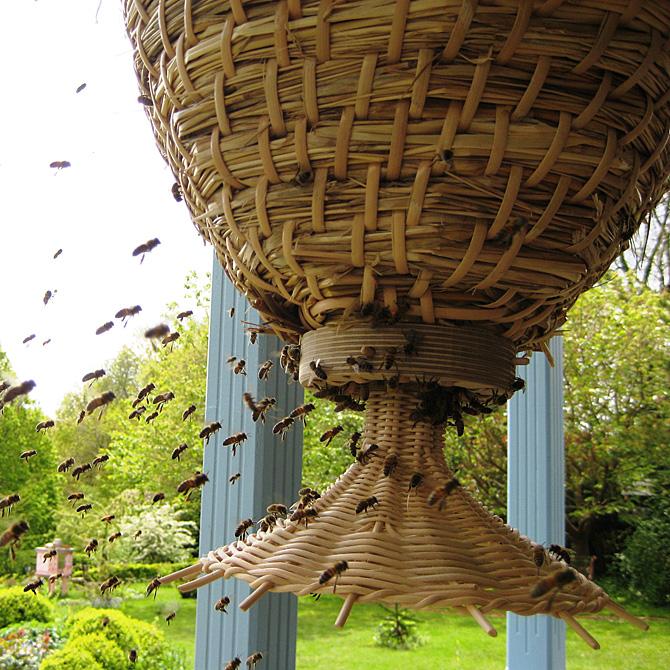
Lead photo by Heidi Herrmann, of the Natural Beekeeping Trust.
